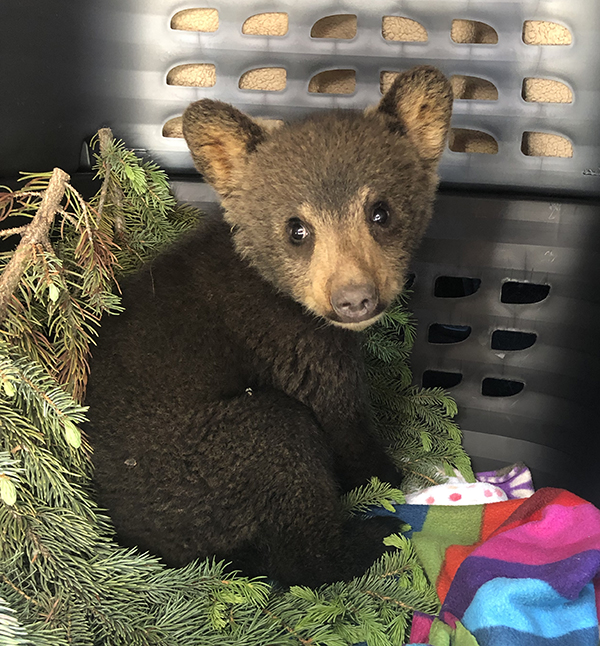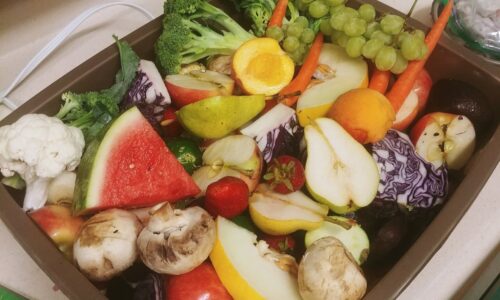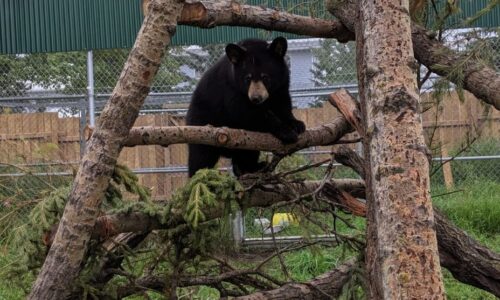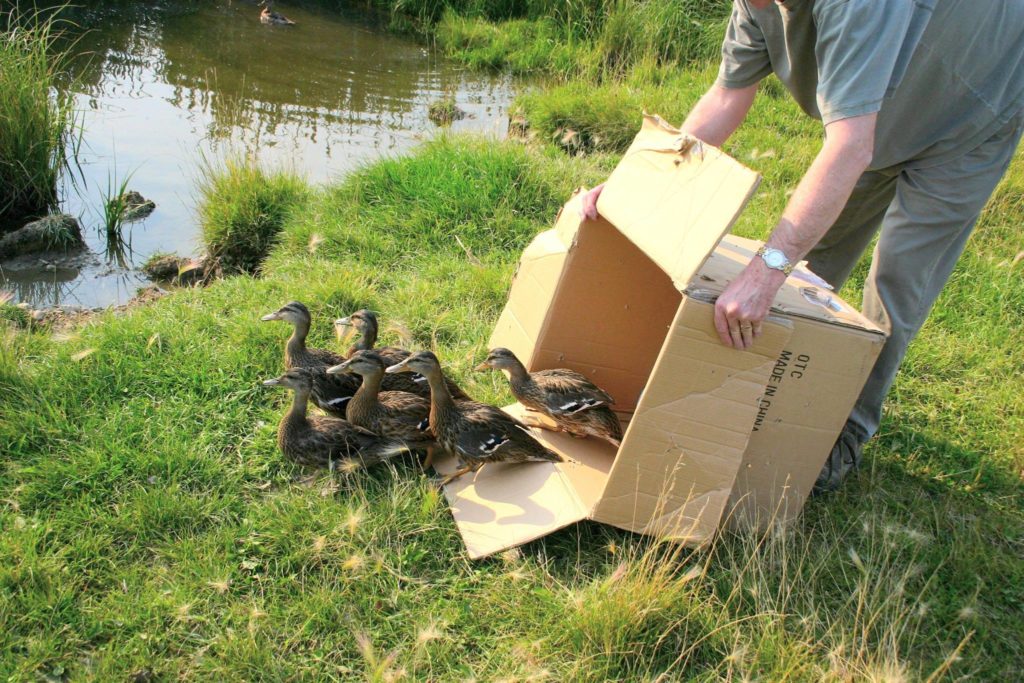Once animals arrive at Alberta Institute of Wildlife Conservation (AIWC), such as this orphaned bear cub (pictured right) we received in 2019, they are fully examined to determine if they have any injuries and if they do, the extent of those injuries. Further testing is often required, such as blood and/or fecal sampling, and radiograph diagnostics. With the completion of our surgical suite in 2009, patients are no longer transported to an off-site clinic for procedures, which greatly reduces their stress levels.


At our hospital, animals are provided with treatment and supportive care. Each patient’s diet varies, being as close as possible to their natural diet.
As an animal progresses, gaining strength and/or injuries healing, he/she will be moved into larger enclosures and finally be moved to an outdoor enclosure. When housed outside, the animal can properly prepare for release back to the wild by conditioning his/her body and acclimatizing to the weather. In the case of this bear cub, she learned to climb very quickly, and this will be important for her as she returns to the wild to help her forage and hunt for food.


Once an animal is strong enough, volunteers often get the opportunity to release the animal back into his/her natural habitat. Animals are returned to where they were found, unless it is not safe to do. If the animal cannot be returned, an appropriate habitat will be chosen to provide each animal with the greatest chance of survival.
Will you help save wildlife in need? We are funded entirely by donations. You can help us by donating, giving supplies or food, corporate partnerships, or shopping.
Charitable Registration #: 14041 6140 RR0001
Website Design by Konstruct Digital
© Copyright 2025 AIWC